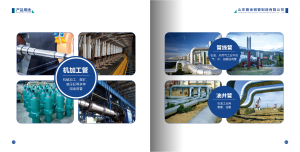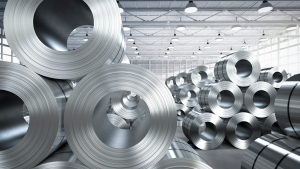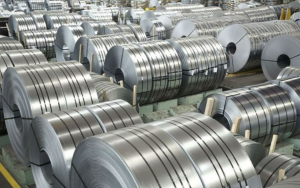Electrical steel (E-steel, lamination steel, silicon electrical steel, silicon steel, relay steel, transformer steel) is speciality steel used in the cores of electromagnetic devices such as motors, generators, and transformers because it reduces power loss. It is an iron alloy with silicon as the main additive element (instead of carbon). The exact formulation is tailored to produce specific magnetic properties: small hysteresis area resulting in low power loss per cycle, low core loss, and high permeability.
Electrical steel is usually manufactured in cold-rolled strips less than 2 mm thick. These strips are cut to shape to make laminations which are stacked together to form the laminated cores of transformers, and the stator and rotor of electric motors. Laminations may be cut to their finished shape by a punch and die or, in smaller quantities, may be cut by a laser, or by wire electrical discharge machining
Electrical steel is an iron alloy which may have from zero to 6.5% silicon (Si:5Fe). Commercial alloys usually have silicon content up to 3.2% (higher concentrations result in brittleness during cold rolling). Manganese and aluminum can be added up to 0.5%.
Silicon increases the electrical resistivity of iron by a factor of about 5; this change decreases the induced eddy currents and narrows the hysteresis loop of the material, thus lowering the core loss by about three times compared to conventional steel. However, the grain structure hardens and embrittles the metal; this change adversely affects the workability of the material, especially when rolling. When alloying, contamination must be kept low, as carbides, sulfides, oxides and nitrides, even in particles as small as one micrometer in diameter, increase hysteresis losses while also decreasing magnetic permeability. The presence of carbon has a more detrimental effect than sulfur or oxygen. Carbon also causes magnetic aging when it slowly leaves the solid solution and precipitates as carbides, thus resulting in an increase in power loss over time. For these reasons, the carbon level is kept to 0.005% or lower. The carbon level can be reduced by annealing the alloy in a decarburizing atmosphere, such as hydrogen.
.Electrical steel made without special processing to control crystal orientation, non-oriented steel, usually has a silicon level of 2 to 3.5% and has similar magnetic properties in all directions, i.e., it is isotropic. Cold-rolled non-grain-oriented steel is often abbreviated to CRNGO.
Grain-oriented electrical steel usually has a silicon level of 3% (Si:11Fe). It is processed in such a way that the optimal properties are developed in the rolling direction, due to a tight control (proposed by Norman P. Goss) of the crystal orientation relative to the sheet. The magnetic flux density is increased by 30% in the coil rolling direction, although its magnetic saturation is decreased by 5%. It is used for the cores of power and distribution transformers, cold-rolled grain-oriented steel is often abbreviated to CRGO.
CRGO is usually supplied by the producing mills in coil form and has to be cut into “laminations”, which are then used to form a transformer core, which is an integral part of any transformer. Grain-oriented steel is used in large power and distribution transformers and in certain audio output transformers.
CRNGO is less expensive than CRGO. It is used when cost is more important than efficiency and for applications where the direction of magnetic flux is not constant, as in electric motors and generators with moving parts. It can be used when there is insufficient space to orient components to take advantage of the directional properties of grain-oriented electrical steel.



